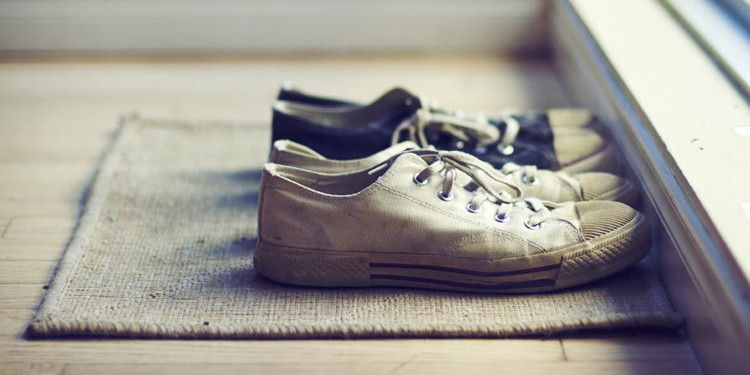The fungi and bacteria that follow shoes enter the house
We should not wear shoes into the house because it can carry fungi and bacteria that cause disease to humans.
Many cultures and countries including Scandinavia, China, Japan, Hawaii, Thailand, Turkey, and India, some Middle Eastern countries have a tradition of banning shoes from entering the home, according to Mother Nature Network. Landlords can provide guests with a visit to slippers or slippers in the home instead.

We should not wear shoes into the house to keep the floor clean.(Photo: iStock).
In the 2008 study, Charles Gerba, a microbiologist at the University of Arizona, USA, took a new pair of shoes for 2 weeks. After analysis, Gerba discovered about 420,000 bacteria appeared on the soles and 3,000 bacteria inside the shoe. He repeated the experiment with 10 participants and had similar results.
Dangerous bacteria found on shoes include E. coli (causing intestinal infection, urinary tract, meningitis and diarrhea), Klebsiella pneumonia (causing blood infection and pneumonia ), bacteria Serratia ficaria (causing wound infection and respiratory tract).
"The prevalence of coliform bacteria and E. coli outside the shoes, about 96%, suggests they are frequently exposed to fecal matter, most likely originating from public toilets or objects. feed outdoors, " said Gerba.
In 2011, Sally Bloomfield, a professor at the London School of Hygiene and Tropical Medicine, conducted research to show that our shoes contain fungi that cause skin infections, damaging hair and nails.
Therefore, we should not wear shoes into the house, as it can carry dangerous fungi and pathogenic bacteria to humans.
- Unbelievably dangerous when wearing shoes into the house
- Can you get a blood infection when you try on shoes but not all?
- Mistakes when often wearing closed shoes
- A 2,000-year-old Roman shoe resembles modern sports shoes
- Sunlight can reduce the amount of bacteria in your home
- Why do Japanese, Korean ... always take off their shoes before entering the door?
- The home of the most dirty spot bacteria school in the house
- Biodegradable shoes
- Video: What happens if you throw acid on your shoes?
- Video: Shoe history from 7000 years BC to modern
- Shoes for lazy people
- 'Variable turn-on' shoes with ... 10,125 usage
 Why do potatoes have eyes?
Why do potatoes have eyes? 'Tragedy' the world's largest carnivorous life: Death becomes ... public toilet
'Tragedy' the world's largest carnivorous life: Death becomes ... public toilet Tomatoes were once considered 'poisonous' for 200 years
Tomatoes were once considered 'poisonous' for 200 years Detecting microscopic parasites on human face
Detecting microscopic parasites on human face